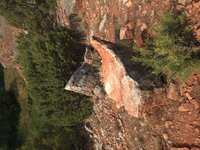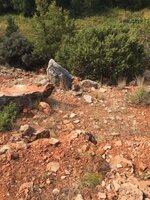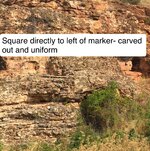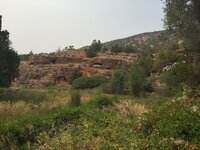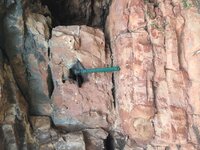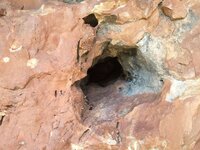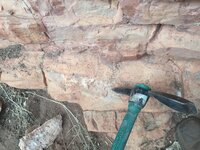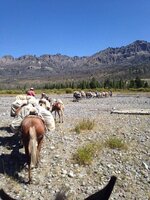I've been doing some reading- ok lots of reading- and am baffled at the continual claims of consistency of treasure signs, the Spaniards and then find that everyone has "their own interpretation". I've read a couple of the Kenworthy books as well as Turtles Lead to Treasure.
Overall the books were ok but lacked the specific info I've been looking for. They were also disappointingly short and did not cite any specific success's by their interpretations nor other resources to further research.
I have read extensive posts here and at other forums as well as articles that cite various rock signs. The most specific I have found was an article about some carvings in the Uinta mountains of Utah. The "spanish carvings", when dated using tree rings dated back to no earlier than the 1930's-1950's. That article found here http://www.fs.usda.gov/Internet/FSE_DOCUMENTS/fsm9_002221.pdf
Having guided hunting parties, spent extensive time in the mountains moving cattle and horses in only a tent camp- I am a little familiar of what it takes to move weight and people in the wilderness. It has given me experience about navigating trails, coming back to "key points" and the various aspects of traveling in such a manner. The food and work it takes is extensive.
That being said- the Spanish had to be extremely aware of new growth of plants, trees, erosion and the many factors that can change a trail. Overall they had to be keen to the "natural paths" of nature. The fatigue that can be experienced by being in weather, low on food and sheer exhaustion from many factors would have required trails to be prominently marked in my opinion. It would have been unlikely that they had to have the sun "just right" at every marker as they were likely traveling and not sitting waiting on the sun at every turn- especially in country that winter set into.
I can understand how there could be signs at treasure sights that would be subtle and take time to understand once they were at a given location. The getting there would have had to have some very prominent markers and likely varied depending on terrain and what was available?
Not to insult anyone but I could drive a lot of people bonkers with photos of "turtles, indian heads, owls" and other "carvings" that are nothing more than mother nature and people wanting to see. Kinda like hunting- eventually the brush starts to move after you watch it long enough.
Any suggestions of where to look? I have a very interesting spot in the black hills. There were bandits and gold. Spaniards? Who knows but I have found a couple things of interest.
Overall the books were ok but lacked the specific info I've been looking for. They were also disappointingly short and did not cite any specific success's by their interpretations nor other resources to further research.
I have read extensive posts here and at other forums as well as articles that cite various rock signs. The most specific I have found was an article about some carvings in the Uinta mountains of Utah. The "spanish carvings", when dated using tree rings dated back to no earlier than the 1930's-1950's. That article found here http://www.fs.usda.gov/Internet/FSE_DOCUMENTS/fsm9_002221.pdf
Having guided hunting parties, spent extensive time in the mountains moving cattle and horses in only a tent camp- I am a little familiar of what it takes to move weight and people in the wilderness. It has given me experience about navigating trails, coming back to "key points" and the various aspects of traveling in such a manner. The food and work it takes is extensive.
That being said- the Spanish had to be extremely aware of new growth of plants, trees, erosion and the many factors that can change a trail. Overall they had to be keen to the "natural paths" of nature. The fatigue that can be experienced by being in weather, low on food and sheer exhaustion from many factors would have required trails to be prominently marked in my opinion. It would have been unlikely that they had to have the sun "just right" at every marker as they were likely traveling and not sitting waiting on the sun at every turn- especially in country that winter set into.
I can understand how there could be signs at treasure sights that would be subtle and take time to understand once they were at a given location. The getting there would have had to have some very prominent markers and likely varied depending on terrain and what was available?
Not to insult anyone but I could drive a lot of people bonkers with photos of "turtles, indian heads, owls" and other "carvings" that are nothing more than mother nature and people wanting to see. Kinda like hunting- eventually the brush starts to move after you watch it long enough.
Any suggestions of where to look? I have a very interesting spot in the black hills. There were bandits and gold. Spaniards? Who knows but I have found a couple things of interest.
Amazon Forum Fav 👍
Last edited:


